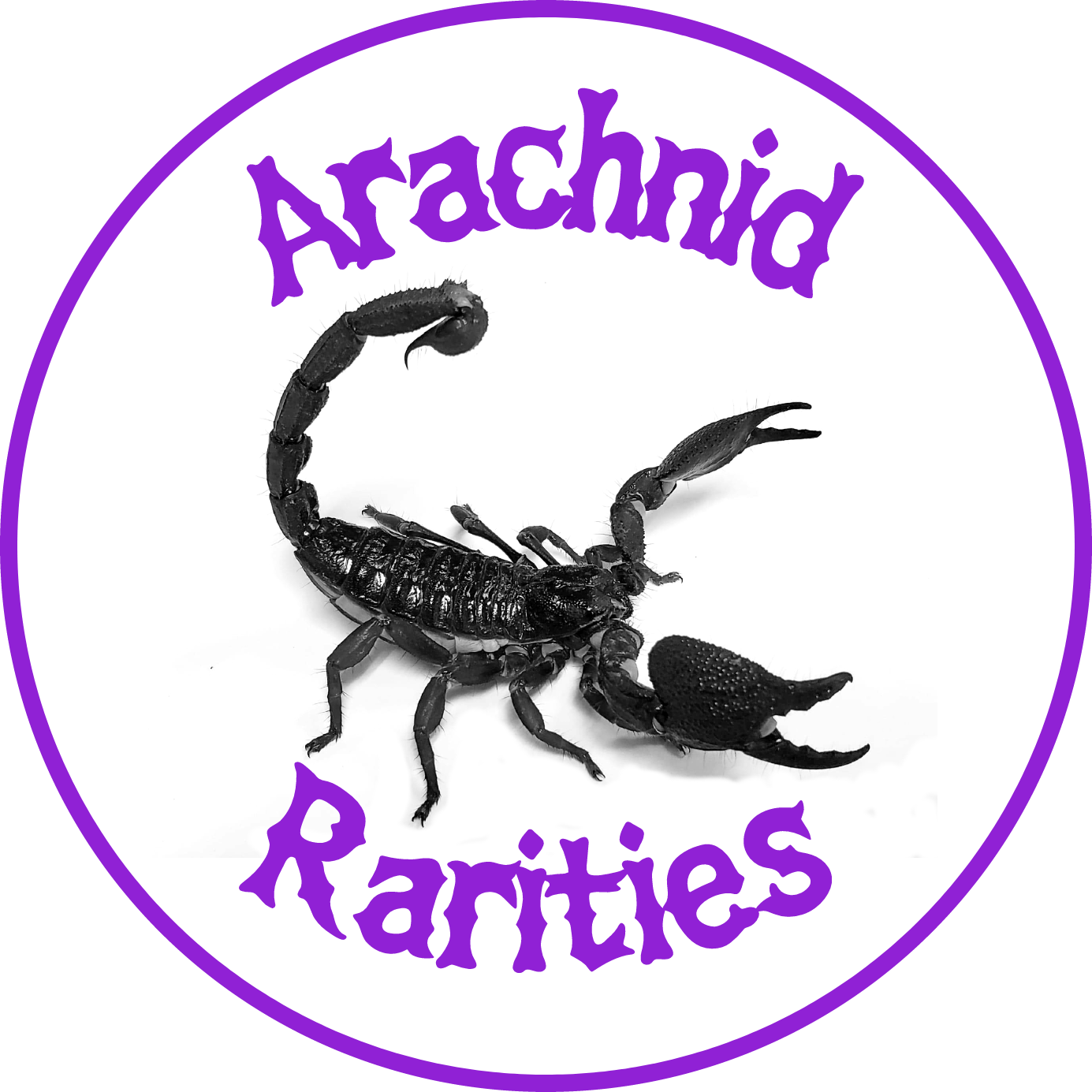Androctonus aeneas Djerba Island Locality
These are captive bred, perhaps one of the rarest species in the hobby with a much anticipated arrival! The Djerba Island form is smaller than the other locality. They have very thin long pedipalps and vary in color from light brown/yellows to black when juveniles!
Geographical Distribution: Djerba, Tunisia
Size: Small 2”-3” (5cm-7.5cm)
Habitat: Arid - Solitary Housing
Substrate: Sand with horizontal cork bark hide
Temperatures: 85F- 95F (30C-35C)
Water requirements: Small amount of water sprayed on a corner or side of enclosure once a week for 2i-4i, minimal water needed for 5i to maturity.
*Medically Significant
© Joel Sartore/National Geographic Photo Ark
These are captive bred, perhaps one of the rarest species in the hobby with a much anticipated arrival! The Djerba Island form is smaller than the other locality. They have very thin long pedipalps and vary in color from light brown/yellows to black when juveniles!
Geographical Distribution: Djerba, Tunisia
Size: Small 2”-3” (5cm-7.5cm)
Habitat: Arid - Solitary Housing
Substrate: Sand with horizontal cork bark hide
Temperatures: 85F- 95F (30C-35C)
Water requirements: Small amount of water sprayed on a corner or side of enclosure once a week for 2i-4i, minimal water needed for 5i to maturity.
*Medically Significant
© Joel Sartore/National Geographic Photo Ark
These are captive bred, perhaps one of the rarest species in the hobby with a much anticipated arrival! The Djerba Island form is smaller than the other locality. They have very thin long pedipalps and vary in color from light brown/yellows to black when juveniles!
Geographical Distribution: Djerba, Tunisia
Size: Small 2”-3” (5cm-7.5cm)
Habitat: Arid - Solitary Housing
Substrate: Sand with horizontal cork bark hide
Temperatures: 85F- 95F (30C-35C)
Water requirements: Small amount of water sprayed on a corner or side of enclosure once a week for 2i-4i, minimal water needed for 5i to maturity.
*Medically Significant
© Joel Sartore/National Geographic Photo Ark



